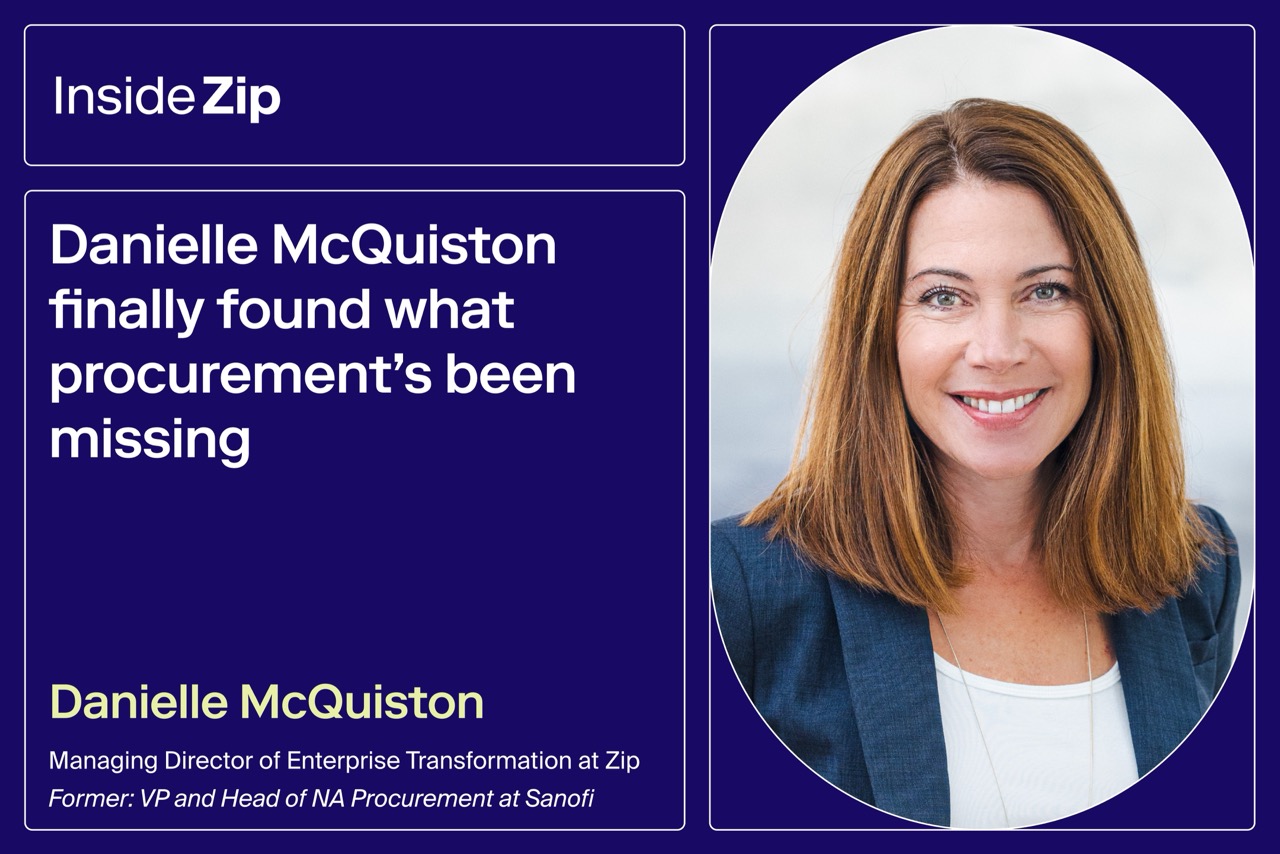
Spend management guide: How to achieve real-time visibility
Optimize your spending with this comprehensive guide.

How can companies ensure they are optimizing their spend management processes to achieve real-time visibility and control?
It’s a question CFOs and procurement leaders are always asking themselves, as an effective spend management system can streamline business expenses and free up cash flow.
Spend management is the process of managing and optimizing company spending to ensure financial health and efficiency.
This article provides a comprehensive guide to understanding and implementing effective spend management strategies. We’ll also cover the key aspects of spend management, the differences from expense management, and the benefits of leveraging specialized procurement orchestration software like Zip to help track spending, centralize the purchasing process, and ultimately save money.
What is spend management?
Spend management encompasses the processes and strategies used by companies to manage and control their expenditures. It involves comprehensive analysis, strategic sourcing, and effective supplier relationships to optimize costs and enhance overall financial health.
Spend management vs. Expense management
While often used interchangeably, spend management and expense management have distinct differences. Expense management focuses on tracking and reimbursing employee expenses, such as travel and credit card expenses.
In contrast, spend management covers a broader scope, including procurement, supplier relationships, and category management. For example, expense management deals with processing expense reports, whereas spend management involves strategic sourcing and procurement process optimization.
Guide to spend management
An effective spend management strategy will help your company optimize expenses and maintain financial health. Let’s take a look at the key components of a well-tuned spend management strategy.
Comprehensive Spend Analysis
It’s worth taking a deep look at current spending patterns through a detailed data analysis.
If you’re able to collect and analyze spend data, you can identify trends, inefficiencies, and opportunities for cost savings. Modern spend management software like Zip have features that help finance and procurement teams gain insights into where company money is being spent and make better-informed decisions.
Supplier Management
You’re only as strong as the vendors powering your business. Develop and maintain strong relationships with those you work with to help optimize costs and ensure quality.
When your supplier management processes are working you can negotiate more favorable terms, routinely monitor supplier performance, and nurture those long-term partnerships. This helps with cost control of course, but also enhances overall supply chain reliability. Take care of your suppliers and they’ll take care of you.
Category Management
Segment spend into categories for tailored management strategies and identification of savings opportunities.
By categorizing expenses, finance teams can focus on specific areas, implement targeted initiatives, and benchmark performance against industry standards. This way, company expenses in every spend category can be managed effectively—and really improve the bottom line.
Policy and Compliance Management
Establish clear policies and ensure compliance to mitigate risks and avoid maverick or ‘rogue’ spending.
A robust expense policy will help in setting spending limits and ensure adherence to internal guidelines and external regulations. When employees are clear on the policy, there’s less of a risk of human error or financial discrepancies.
Technology Integration
Modern tools and procurement orchestration platforms can lead to real-time visibility and data-based insights, the key to modern, efficient spend management.
Zip can provide real-time insights, automate manual processes, and help in tracking and managing spending more effectively. This type of integrated orchestration is perfect for managing subscriptions, purchase orders, and accounts payable processes.
Continuous Improvement
Regularly review and optimize the spend management strategy based on performance metrics and changing business needs.
This means prioritizing performance data analysis, identifying areas for enhancement, and implementing changes to improve efficiency and effectiveness. By continually assessing and optimizing the process, you can be sure that your strategy evolves with the changing business and market environment.
Key metrics to track and manage spend
Effective spend management requires tracking these essential metrics:
- Total Spend: The overall expenditure of the company, providing a high-level view of financial health.
- Spend by Category: Detailed breakdown of expenses across different categories, helping identify cost-saving opportunities and inefficiencies.
- Supplier Performance: Evaluating suppliers based on cost, quality, and reliability to ensure optimal supplier relationships and performance.
Benefits of effective spend management
Implementing a quality business spend management strategy has benefits that can reverberate throughout the entire company. These are the primary benefits.
- Cost Savings: By identifying and eliminating inefficiencies and duplication, companies can significantly reduce overspending and find opportunities for reimbursements.
- Efficiency: Streamlining processes and automating manual tasks will reduce the time and effort required to manage spending, enhancing overall efficiency. Your teams will be glad to automate their most time-consuming work.
- Risk Management: You can minimize financial risks and protect the company from potential liabilities when everyone is fully adopted to the process.
- Compliance: Adhering to a well-defined expense policy ensures that all expenditures are justified, documented, and within the set spending limits.
Role of AI and machine learning in spend management
AI and machine learning are transforming spend management by providing advanced analytics, workflow automations for routine tasks, and real-time insights for optimized decision-making.
The opportunities for spend acceleration from AI are remarkable, powered by predictive spend analysis, anomaly detection, and process automation. Procurement orchestration plays a huge role in this!
According to Nick Heinzmann, Head of Research at Zip writing in his newsletter ‘Margin Makers’: “AI-based experiences will be the norm, with intelligent guidance for end users and previously niche capabilities like semantic risk analysis seamlessly embedded into common workflows.”
These workflows will be highly cross-functional, with procurement teams integrating their ERP, IT and GRC reviews, legal processes along with procurement and spend management platforms, combining vendor and inventory management with other workflows across the company.
Gain real-time visibility into spending with Zip
Fortunately, Zip can coordinate cross-functional workflows within one powerful procurement orchestration platform. Zip offers several key capabilities to enhance spend visibility and control:
- Real-time Spend Insights: Zip provides a unified view of spend across all systems, allowing users to track and analyze spend by department, category, or vendor, enabling better decision-making.
- End-to-End Productivity Tracking: You can monitor SLAs and optimize the purchase and AP processes, identifying bottlenecks and improving overall efficiency.
- Granular Savings Tracking: Zip records savings at a line-item level, helping users see the cumulative impact and manage savings effectively.
- Simplified Reporting: You can also automate repeatable exports and scheduled email deliveries, facilitating easy data manipulation and sharing with stakeholders.
- Spend Lifecycle Visibility: Zip offers early diagnosis of requirements to unlock savings opportunities, enhancing financial control and strategic planning.
To experience the benefits of Zip’s spend management solutions, request a demo today.

Maximize the ROI of your business spend

Enter your business email to keep reading



























.webp)



















.avif)













.avif)










.webp)





.avif)












.avif)
